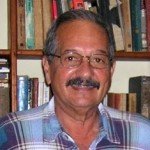The South American Ogre So Loved By His People

By Manuel E. Yepe
September 2009
A CubaNews translation.
Edited by Walter Lippmann.
Who is this monster, the United States’ worst enemy in South America, who is worse than Fidel Castro and Osama bin Laden? The who supports all terrorists and drug traffickers in the world, from Al Qaeda to Hamas, who promotes hate against the wealthy, and who can also count on enough popular support to win all the elections?
With questions such as these begins the documentary “South of the Border” by the prominent American filmmaker Oliver Stone. The film is about the leader of the Bolivarian Revolution, Hugo Chávez, to be presented on Sunday September 6, to the press at the Venice Film Festival. According to reports, the film includes testimony about the personality and career of the charismatic Venezuelan leader by Latin American presidents, Cristina Fernandez of Argentina, Evo Morales of Bolivia, Luiz Ignacio Lula da Silva of Brazil, Rafael Correa of Ecuador, Fernando Lugo of Paraguay, and Raúl Castro of Cuba.
The announcement of the completion of this film project coincided with the failure of a campaign funded by the Colombian oligarchy, supported by groups of the wealthy Venezuelan opposition, and the U.S. It was orchestrated under the slogan “No more Chavez.” The campaign sought to organize simultaneous marches on 4 September 2009 in ninety cities worldwide, “to protest the insults against Colombia which were made by the Venezuelan leader.”
According to press reports, the event was convened, by “a group of young Colombian entrepreneurs” who had predicted the event would be attended by great numbers of people, in major cities worldwide however, it only managed to attract small crowds using social networking sites like Facebook and Twitter on the Internet.
The movement, considered, by Venezuelan-American lawyer, writer and journalist Eva Golinger, to be “a call for assassination, hatred and destabilization” failed when it only brought together groups of a few hundred people in a number of cities – much smaller numbers than the projected. “They failed and were made to appear ridiculous with the demonstrations they called against Chavez for Friday and Saturday,” said the president of the Venezuelan National Assembly, Cilia Flores.
Organizers affirmed, without giving specific numbers, that they were successful in carrying out rallies in Madrid, Barcelona, Paris, Sydney, Brussels, Hamburg, Buenos Aires, Sao Paulo, Santiago, Tegucigalpa, several cities in Venezuela, as well as thirty locations in Colombia.
The most popular of these was, without a doubt, the rally that was “called” in Tegucigalpa, by the military government that took power by military coup on July 1 and which, removed the constitutional President of Honduras Manuel Zelaya. The insurgents reported that about two thousand people participated in an event led by Roberto Micheletti, the de facto head of state.
In Bogota, several groups marched from the northern suburbs of the city, areas that have high concentrations of the upper class, to the historic center. In the downtown area of Bogotá, and in other areas, the anti-Venezuela protests were rejected by grassroots groups with whom they exchanged shouts and at times, even blows.
Popular Protesters came out against President Álvaro Uribe’s proposal to make changes in current law in order to run for re-election again, and also, in opposition to Uribe’s military pact with the U.S. government. Which, according to the official version, has as its aim to put Colombian military facilities at the service of U.S. operations against drug trafficking in the region. For all the other South American leaders – primarily Chavez, this action represents the surrender of Columbia to U.S. military occupation and poses a threat to the independence of Latin America nations.
In Caracas, popular and opposition groups gathered at a safe distance from each other in order to avoid confrontation, and to express, respectively, rejection and support for President Hugo Chávez and the Bolivarian revolution. The demonstrations were preceded by appeals to keep the marches peaceful.
In the demonstration against Chavez, where a few hundred opponents chanted “No more Chavez,” the counterrevolutionary slogan launched from Bogota, the metropolitan mayor Antonio Ledezma, of the opposition, demanded freedom of expression in an act that, paradoxically, was being protected by authorities and broadcast by several radio stations and local television stations. There was also criticism of a law passed by parliament that expands educational options to low-income sectors.
On the side of Chavez supporters, thousands of citizens dressed in red, the color of the United Socialist Party of Venezuela (PSUV), and marched in support of the Bolivarian leader, while at the same time other hundreds of marches in support of Chavez were taking place in inland towns. Diosdado Cabello, a leader of PSUV reported in Caracas that the Venezuelan opposition maintains its plan of assassination because of the inability to defeat Chavez at the polls in democratic processes.
By telephone, from Tehran, Iran, where he was on an official visit, Hugo Chávez, the evil defender of the humble, the enemy of the rich and of American hegemony on the continent, ratified the Venezuelan peoples commitment demonstrated in their mass rally against the foreign ministry in Caracas, by stating, “homeland, freedom and socialism.”

You must be logged in to post a comment.